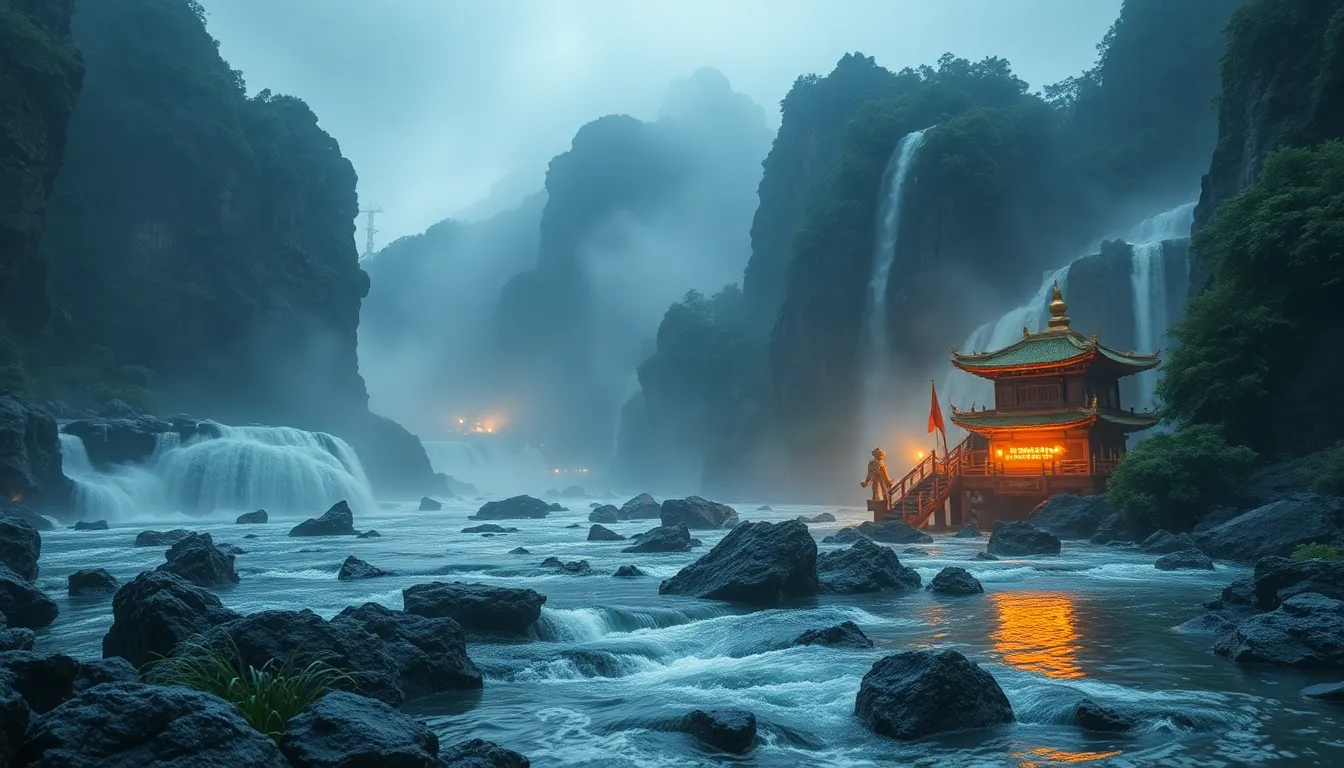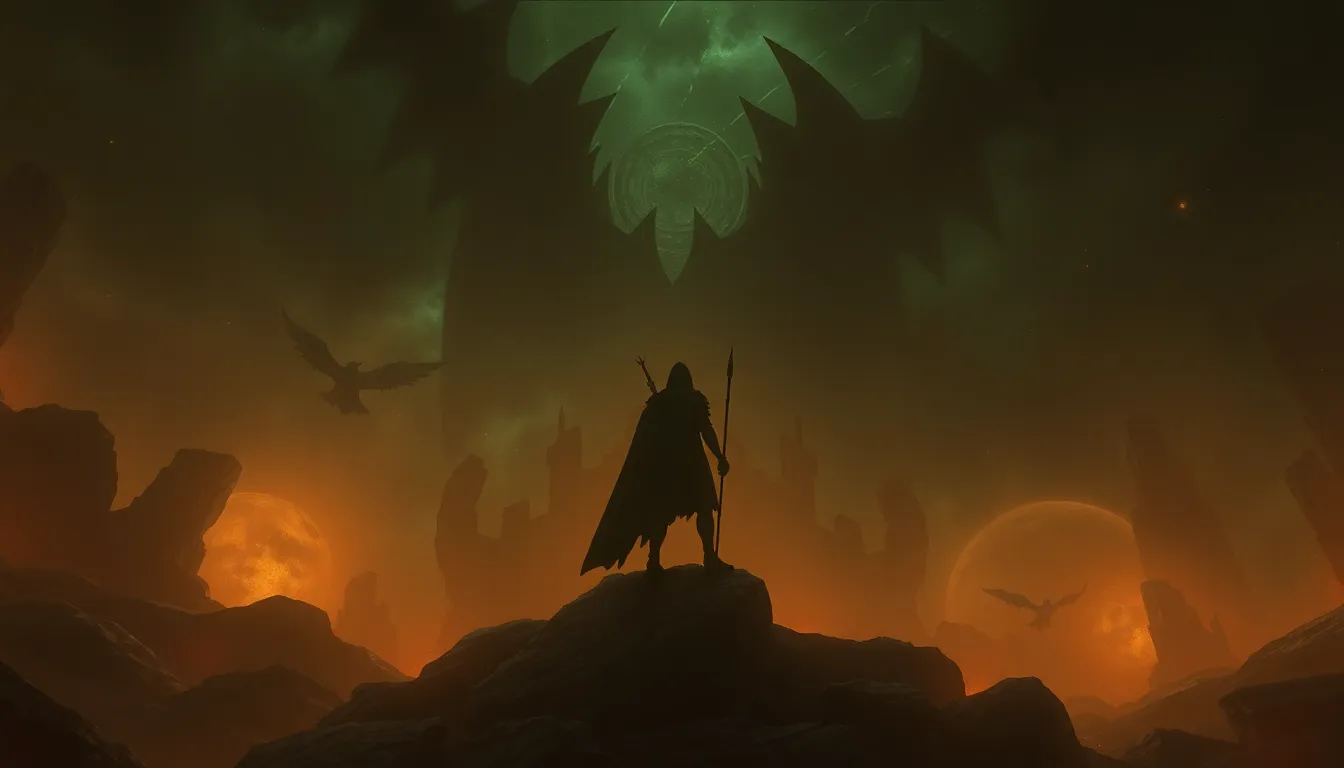The Mythical Elements: How Nature Influences Creation Stories
Introduction: The Interplay Between Nature and Myth
Creation stories are fundamental narratives that explain the origins of the world and humanity. These tales, found in cultures across the globe, serve not only as explanations of existence but also reflect the values, beliefs, and environmental contexts of the societies that tell them. The natural elements—earth, water, fire, and air—are often personified or represented in these myths, highlighting their significance in shaping human understanding and spirituality.
Defining Creation Stories Across Cultures
A creation story, also known as a cosmogony, is a narrative that describes the beginning of the world and the emergence of life. These stories vary widely but often share common themes of chaos, order, and the interplay between different elements. Some notable examples include:
- The Book of Genesis – The Judeo-Christian account of creation, where God creates the world in six days and rests on the seventh.
- The Popol Vuh – A Mayan creation myth that tells the story of the gods’ attempts to create humans from different materials.
- The Enuma Elish – An ancient Babylonian epic that describes the creation of the world from the body of the slain goddess Tiamat.
The Role of Earth in Creation Myths
Earth is often seen as the foundation of life and is imbued with deep symbolism in many cultures. It represents stability, fertility, and sustenance. In various creation myths, the earth serves as a canvas upon which life unfolds. For example:
- The Earth Diver Myth – Found in many Native American traditions, this myth describes a being diving into the water to retrieve mud, which is then used to create land.
- The Genesis Creation – The earth is created from formlessness, setting the stage for life to flourish.
These narratives illustrate the earth’s vital role as a nurturing force in the cosmos.
Water as a Catalyst for Creation
Water is depicted in myths as both a giver and taker of life. It symbolizes purification, fertility, and the primordial state of existence. Flood myths are particularly prevalent across cultures, highlighting water’s destructive yet regenerative powers. For instance:
- The Great Flood – Found in multiple traditions, including the story of Noah in the Bible and the Epic of Gilgamesh, where a flood wipes out humanity, allowing for a rebirth.
- The Hindu Myth of Manu – In which Manu is warned of a flood and builds a boat to save himself and the seeds of all life.
These stories emphasize the transformative power of water and its central role in the cycle of life.
Fire: The Element of Transformation
Fire is often associated with transformation, destruction, and renewal. In many creation stories, fire represents a duality—its ability to destroy while simultaneously fostering new beginnings. For example:
- The Phoenix – In Greek mythology, this bird is consumed by fire only to rise again from its ashes, symbolizing regeneration.
- The Hindu Agni – The fire god is essential in rituals, representing purification and the divine presence in creation.
Fire’s role in these narratives illustrates its importance in both the physical and spiritual realms.
Air and the Breath of Life
Air is often associated with the breath of life and the spirit. In many cultures, the act of breathing is tied to the divine and the essence of being. For instance:
- The Biblical Creation – God breathes life into Adam, symbolizing the connection between the divine and humanity.
- The Maori Myth – In which the god Tane breathes life into the first humans, emphasizing the sacredness of breath.
These stories highlight air’s essential role in creation, linking it to life and consciousness.
Celestial Bodies: The Influence of Stars and Planets
Astronomy plays a significant role in many creation stories, with celestial bodies often personified as gods or as significant forces in the creation process. The movement of stars and planets can symbolize the passage of time and the cycles of life. For example:
- Mayan Cosmology – The Mayans believed that the movement of celestial bodies dictated the creation of time and the cyclical nature of life.
- The Egyptian Creation Myth – Where the sun god Ra creates the world, linking the cosmos to the act of creation.
These narratives demonstrate how humanity has historically looked to the heavens to understand their origins.
Nature’s Cycles and Their Reflection in Myths
Many creation stories reflect the cycles of nature, particularly the changing seasons and agricultural rhythms. These narratives often align with fertility and the renewal of life. For example:
- The Persephone Myth – In Greek mythology, the cycle of Persephone’s descent and return from the underworld explains the changing seasons.
- The Native American Earth Renewal Ceremonies – These rituals celebrate the cycles of planting and harvesting, embodying the connection between creation and nature’s rhythms.
Such stories emphasize the interdependence between human life and the natural world.
Modern Interpretations of Nature in Creation Stories
In contemporary society, ancient myths are often reinterpreted in light of environmental changes and challenges. As climate change becomes a pressing issue, many cultures are revisiting their creation stories to find relevant lessons for today. For instance:
- Some indigenous cultures emphasize the importance of stewardship of the earth, drawing parallels between their myths and modern environmentalism.
- Contemporary retellings of myths often include themes of resilience and adaptation in the face of ecological crises.
This reinterpretation underscores the ongoing relevance of creation stories in understanding our relationship with nature.
Conclusion: The Enduring Legacy of Nature in Human Imagination
The influence of nature on creation myths is profound and enduring. These narratives not only explain the origins of the world but also reflect humanity’s deep connection to the natural environment. As we explore these myths, we gain insights into the values and beliefs of different cultures, as well as a better understanding of our own relationship with the earth.
In an age of environmental uncertainty, revisiting these ancient stories may provide guidance and inspiration as we seek to navigate the challenges of the modern world.



